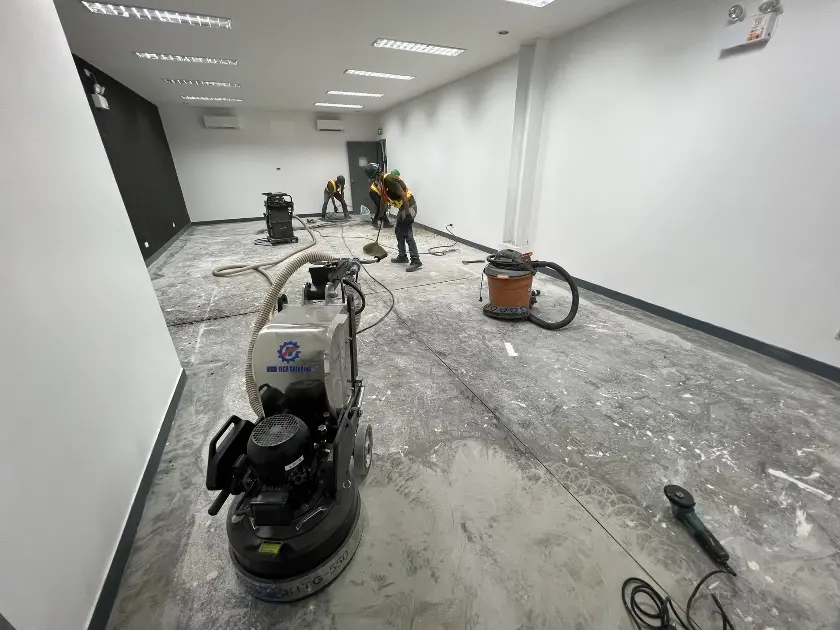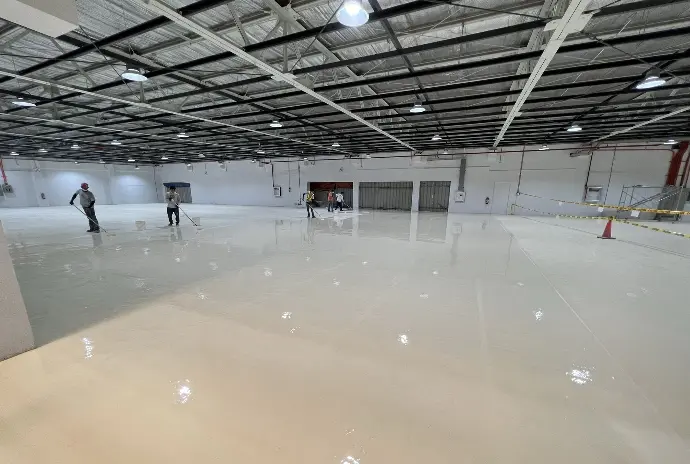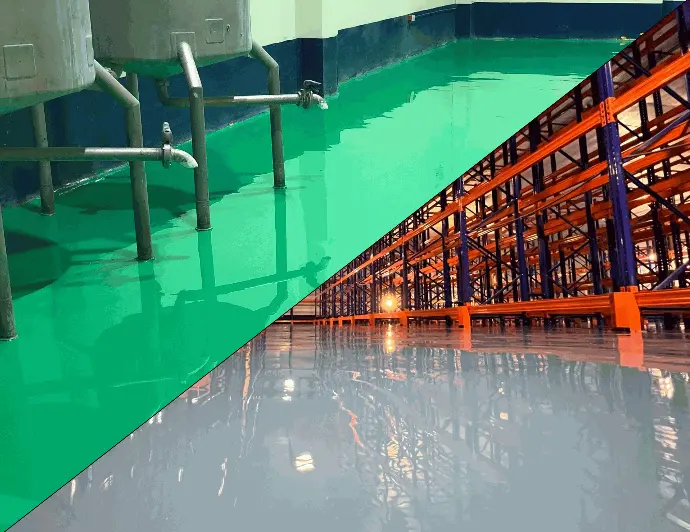Common Mistakes in Epoxy Applications
Published on January 2024
Epoxy flooring applications can provide a durable and seamless finish but there are common mistakes an applicator can make that can compromise the quality and durability of the epoxy coating. Here are some common mistakes to avoid:
Poor Surface Preparation
Inadequate surface preparation is one of the most common mistakes made by applicators. Epoxy coatings need a clean and properly prepared surface to adhere well. Thoroughly clean the surface to remove dirt, grease, and contaminants, even out the surface, and fix concrete surface defects before applying the epoxy coating. This is usually achieved by mechanically grinding the concrete surface and filling cracks with epoxy putty or epoxy grout & mortar. Make sure that the surface is completely dry before applying the coating.
Insufficient Mixing
Incomplete or improper mixing of epoxy components, epoxy part A and B, can result in uneven curing and compromised performance. Follow the manufacturer's instructions for mixing ratios and procedures precisely. Use a clean bucket for mixing—or pour the part B in the part A container as most containers are designed to have more space for mixing—and allow sufficient time for the components to blend thoroughly.
Inadequate Ventilation
Applying epoxy in poorly ventilated areas can lead to the buildup of fumes, which may be harmful and affect the curing process and the people who inhale the air inside the area. Ensure proper ventilation during application. Use fans and open windows or doors to allow fresh air to circulate the room. Follow safety guidelines and use appropriate personal protective equipment.
Applying Epoxy in Extreme Temperatures
Applying epoxy in extremely hot or cold temperatures can affect the curing process and the final finish especially because epoxy paint is a thermosetting polymer. Follow the recommended temperature range provided by the manufacturer. Typically, epoxy should be applied in moderate to warm temperatures to achieve the best results.
Rushing the Application
Applying epoxy too early without allowing sufficient time to cure between coats can result in poor adhesion and leveling issues. Follow the recommended drying times between coats as specified by the manufacturer. Rushing the process can compromise the durability of the epoxy flooring.
Ignoring Humidity Levels
High humidity levels can affect the curing and drying times of epoxy coatings. Check and control humidity levels in the application area. Follow the manufacturer's recommendations for acceptable humidity ranges during application to ensure that the final results in a smooth and seamless epoxy flooring.
Neglecting UV Exposure
Some epoxy formulations may not be suitable for areas with prolonged exposure to UV light, leading to yellowing or degradation. If the epoxy will be exposed to sunlight, choose a UV-resistant formulation or apply a topcoat that provides UV protection.
Inadequate Thickness
Applying epoxy in insufficient thickness can result in a weaker and less durable coating especially for areas that are exposed to heavier foot traffic or heavy machine and equipment. Follow the recommended application thickness specified by the manufacturer to ensure the epoxy provides the desired level of protection.
While epoxy is known to be durable and hard-wearing, it can only achieve this if proper application procedures are followed. As such it's always recommended to refer to the specific instructions provided by the epoxy manufacturer and consider the specific conditions of the application site to achieve the desired results.
Tags: epoxy, epoxy floor painting, epoxy floor, epoxy floor coating, epoxy coating, industrial epoxy flooring, common mistakes, common epoxy mistakes, common mistakes in epoxy application
Suggested articles
Epoxy coating vs Self-leveling epoxy
January 2024
Contact us
Durability You Can Stand On
Request a quote or inquire about our services further by clicking the button below



